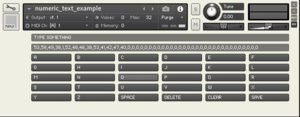dfhagai
HD
Hi,
I'm working on a multi-script and I'm trying to figure out how to save different script variables (numbers) and strings (text) into a single NKA file.
I don't want the user to save two external NKA's (one for variables and one for strings)...
Is this at all possible?
Thanks!!!
HD
I'm working on a multi-script and I'm trying to figure out how to save different script variables (numbers) and strings (text) into a single NKA file.
I don't want the user to save two external NKA's (one for variables and one for strings)...
Is this at all possible?
Thanks!!!
HD





